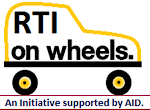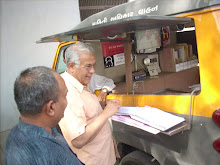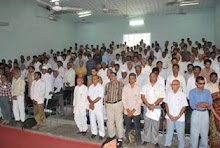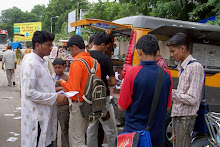The Wire: New Delhi: Tuesday, April
18, 2017.
The RTI Act
has faced resistance from the courts in recent years, especially when information
is sought about their functioning as public authorities, a new report says.
The jury is
out on whether the judiciary has over the years played the role it ought to
while dealing with matters pertaining to promoting transparency in general and
the Right to Information (RTI) Act in particular. Legal luminaries and RTI activists
alike believe the court’s must play a more supportive role if greater
transparency in public life is to be achieved.
A recent
report titled ‘Tilting the Balance of Power – Adjudicating the RTI Act’ by the
Satark Nagrik Sangathan (SNS) and the Research, Assessment and Analysis Group
(RaaG), notes that before the RTI law was passed, the judiciary played a
seminal role in recognising and furthering peoples’ right to information in
India. In fact, as far back as 1975, 30 years before the RTI law was enacted,
the Supreme Court adjudged the right to information to be a fundamental right.
Besides being
the final adjudicatory authority for the law, the Supreme Court and high courts
are also public authorities under the RTI Act. The report, authored by RTI
activists Amrita Johri, Anjali Bhardwaj and Shekhar Singh, suggests that the
RTI Act appears to be facing resistance from the courts, especially when
information is sought about their functioning as public authorities.
Is RTI
facing resistance from the judiciary?
In the last
ten years, scores of RTI applications have been filed by citizens seeking
information from the courts, many of which have required judicial adjudication.
Five such matters reached the Supreme Court, three of which were referred to a
constitution bench that is yet to be set up. The other two cases were dismissed
by the apex court at the stage of admission. About the cases that were
dismissed, the RaaG-SNS report notes:
“Unfortunately,
these cases raised matters of great public interest but were dismissed by the
SC without providing any details or reasons in their orders. One of them sought
information using the RTI Act, about cases pending with the Supreme Court in
which the arguments had already been heard but orders had been reserved. In the
other matter, the applicant sought the total amount of medical expenses of
individual judges reimbursed by the Supreme Court, citing a Delhi high court
ruling of 2010 which stated that, ‘The information on the expenditure of the
government money in an official capacity cannot be termed as personal
information’.”
Information
denied on appointment of judges
In one of the
three cases referred to the constitution bench, an RTI applicant filed a
request to the Supreme Court in 2009 seeking a copy of the complete
correspondence, with file notings, exchanged between the chief justice of India
(CJI) and other concerned constitutional authorities relating to the
appointment of Justice H.L. Dattu, Justice A. K. Ganguly and Justice R.M. Lodha
as judges of the Supreme Court, superseding the seniority of Justice A.P. Shah,
Justice A.K. Patnaik and Justice V.K. Gupta. The information sought was denied.
When the Central Information Commission (CIC) directed that the information be
furnished, the information officer of the apex court appealed directly to the
Supreme Court against the order.
CIC order
on assets of judges challenged before apex court
In the second
case, the RTI applicant asked if any declaration of assets was ever filed by
the judges of the Supreme Court or high courts to the respective CJIs. The
Supreme Court’s 1997 resolution requires judges to declare to the CJI the
assets held by them in their own name, in the name of their spouse or any
person dependent on them. The information was denied but the CIC directed that
the information sought by the applicant be provided. The CIC order was
challenged by the Supreme Court in the Delhi high court, which held that the
contents of asset declarations were entitled to be treated as personal
information under Section 8(1)(j) of the RTI Act, but since the applicant only
sought to know whether the 1997 resolution was complied with, the sought
information should be provided. A three-judge bench of the high court stated:
“…A judge
must keep himself absolutely above suspicion, to preserve the impartiality and
independence of the judiciary and to have the public confidence
thereof.…Accountability of the judiciary cannot be seen in isolation. It must
be viewed in the context of a general trend to render governors answerable to
the people in ways that are transparent, accessible and effective. Well defined
and publicly known standards and procedures complement, rather than diminish,
the notion of judicial independence. Democracy expects openness and openness is
concomitant of free society. Sunlight is the best disinfectant.’’
This
judgement was subsequently challenged by the chief public information officer
before the Supreme Court.
In the third
case, quoting a media report, an RTI application was filed with the Supreme
Court seeking copies of correspondence between the then CJI and a judge of the
Madras high court regarding the attempt of a union minister to influence
judicial decisions of the said high court. The applicant also sought
information regarding the name of the concerned union minister. The CIC, in its
order, overturned the decision of the public information officer, which denied
the information sought. Bypassing the Delhi high court, the public information
officer of the Supreme Court directly moved a petition before the SC
challenging the CIC order to disclose information.
Three
cases clubbed together
In its order,
the Supreme Court, while hearing the case related to correspondence between the
CJI and other constitutional authorities about the appointment of judges,
clubbed the other two cases with the matter. The apex court order stated that
the consideration of a larger bench was required as grave constitutional issues
were at stake, including the need to balance the independence of the judiciary
and the fundamental constitutional right of citizens to freedom of speech and
expression.
The
court listed three sets of questions which, according to them, raised
substantial questions of law as to the interpretation of the constitution:
· Whether the concept of independence of judiciary requires
and demands the prohibition of furnishing of the information sought? Whether
the information sought for amounts to interference in the functioning of the
judiciary?
· Whether the information sought for cannot be furnished to
avoid any erosion in the credibility of the decisions and to ensure a free and
frank expression of honest opinion by all the constitutional functionaries,
which is essential for effective consultation and for taking the right
decision?
· Whether the information sought for is personal
information and therefore exempt under Section 8(1)(j) of the Right to
Information Act?
The report by
RaaG and SNS notes that while the first two sets of questions do seem to relate
to constitutional issues, like the adverse impact peoples’ right to information
might have on judicial independence, or amount to interference in the
functioning of the judiciary, or compromise its credibility, it is not clear
how the third question relating to exemption on grounds that it is personal
information under section 8(1)(j) of the RTI Act raises any constitutional
concerns.
The report
goes on to highlight the contradictions inherent in the stand taken by courts
in these matters by quoting judgements of the Supreme Court in which the court
has itself discussed one or more of these issues in relation to the judiciary
and other public functionaries and ruled in favour of transparency. For
instance, the Supreme Court in Manohar s/o Manikrao Anchule vs State of
Maharashtra & Anr in 2012 stated that “It cannot be doubted that
transparency is the sine qua non of restraint on abuse of judicial powers.
Transparency in decision-making not only makes the judges and decision-makers
less prone to errors but also makes them subject to broader scrutiny.”
In Union of
India vs Association for Democratic Reforms, 2002, the court directed the
Election Commission to call for information from all candidates seeking
election to parliament or a state legislature, and from their spouses and
dependants, about their assets as, “…there are widespread allegations of
corruption against the persons holding post and power. In such a situation,
question is not of knowing personal affairs but to have openness in democracy
for attempting to cure cancerous growth of corruptions by few rays of light.
Hence, citizens who elect MPs or MLAs are entitled to know that their
representative has not miscomputed himself in collecting wealth after being
elected.”
In PUCL vs
Union of India in 2003, while examining the plea that contesting candidates
should not be required to disclose the assets and liabilities of their spouses
as it would violate the right to privacy of the spouses, the Supreme Court held
that the fundamental right to information of a voter and citizen is promoted
when contesting candidates are required to disclose the assets and liabilities
of their spouses. The SC ruled that when there is a competition between the
right to privacy of an individual and the right to information of the citizens,
the former right has to be subordinated to the latter right, as the latter
serves a larger public interest.
Similarly, to
ensure transparency and improve the process of selection of judges in Supreme
Court in Advocates-on-Record Association and Ors. vs Union of India in 2015, a
five-judge bench laid down broad guidelines for the government of India which
was tasked with the responsibility of preparing the Memorandum of Procedure for
the appointment of judges. Among other things, the guidelines stated that the
eligibility criteria and procedure for selection of judges must be transparent
and put up on the website of the court concerned and the department of justice.
In addition, they required the provision of an appropriate procedure for
minuting the discussions including recording the dissenting opinion of the
judges in the collegium.
Supreme
Court’s changing position
Former
information commissioner Shailesh Gandhi believes the Supreme Court’s stance
towards RTI has changed in the past few years.
“If I look at
the Supreme Court judgments on transparency and Right to Information before the
Act came in 2005 and after the Act, it looks like these are two different
countries, two different courts,” he said. Gandhi said he had earlier come out
with another report which showed how out of 17 orders of the SC on RTI, in only
two it ordered information to be given.
On what could
have prompted the change, he said, “I can guess very easily. Before the RTI Act
came freedom of speech was fine but nobody questioned the court and nobody
tried to find out anything about the courts and people would only say, “I have
great faith in the judiciary”. The Right to Information for the first time
changed that paradigm. A reporter of any newspaper would be wary of what he
writes as far as the judiciary is concerned. But RTI people started asking all
kind of inconvenient questions. And some things have come out which have been
very unpalatable, to say the least.”
Gandhi said
now the judiciary refuses to look at RTI applications that have anything to do
with them. “When you are in a public office and right to information is there,
people will ask all kinds of things. When I was a commissioner, someone had
filed an RTI application asking how much bribe Shailesh Gandhi has taken in the
last two years. Now, things like this can be upsetting to people. And in my
opinion, that is why they have gone against transparency and RTI Act.”
He said that
often the judiciary has been very direct in showing its anger against the RTI.
“In the first CBSE judgment, they said RTI should not be allowed to damage the
peace, integrity and harmony of India. Such a view is okay for terrorists, but
not for citizens. I have noticed over time that everyone in power dislikes
being transparent.”
Recalling how
the website of the Supreme Court was probably the best which existed under
Section 4(1)(b) when he was the chief information commissioner, the first chief
of the CIC, Wajahat Habibullah said he also, however, understands that having a
website and making disclosures are two different things. “And therefore it is
quite possible that in this case the Supreme Court has not been very favourably
inclined towards the RTI. It simply means that the current phase of RTI in the
courts is one that is defensive. It is not anti-RTI, it is more defensive in
terms of the openness of the RTI.”
‘Judiciary
too resists accountability’
Senior
advocate Prashant Bhushan concurred that the judiciary too does not like
transparency when it concerns its own accountability. “Unfortunately we have
seen that when it comes to themselves, the courts do not want any
accountability or any transparency and this we have seen in all kinds of
issues.”
For example,
he said, “in judicial appointments, the court shies away from transparency, by
and large, some judges are exceptions who ask for it, but otherwise they don’t
want transparency. Same thing happens with accountability. They don’t want any
accountability and, in fact, they have progressively whittled down their
accountability.”
Habibullah
believes that at the moment “RTI is facing challenges”.
“When I was
there [as the Chief Information Commissioner] my dealing was basically at the
high court level as there were few cases in the Supreme Court then. The high
court decisions were generally very supportive of the RTI. It was the time of
the actual establishment of the jurisdiction or expanse of the RTI and these
orders were very constructive. Now it is passing through a different phase
where there has been some sort of a retreat,” he said.
‘Public
pressure can change the tune’
Bhushan said
the judiciary has also very often taken contempt action against people who have
written anything against the judiciary or the judges. “Therefore, it is very
clear that by and large judges do not want any accountability, nor any
transparency. And that is why now that the RTI Act has also been applied to
them they are passing judicial orders basically obstructing the orders of the
CIC. This is what has happened. Ultimately these matters are for the courts to
decide. But once there is sufficient public opinion then probably they will
change their tune.”
According to
Bhardwaj of SNS, given the extremely progressive orders related to transparency
by the Supreme Court before the RTI Act was passed, people expect the judiciary
to champion the cause of transparency and expand the scope of the law. “The
reluctance of the judiciary to submit itself to the RTI Act is very concerning
and we really hope that the constitution bench will give a progressive ruling
on the questions referred to it. One of the main objectives of the RaaG-SNS
report is to provoke a public debate on the manner in which the RTI Act is
being interpreted by the adjudicators and to mobilise public opinion to demand
greater openness in the functioning of all public authorities including the
courts.”














































































